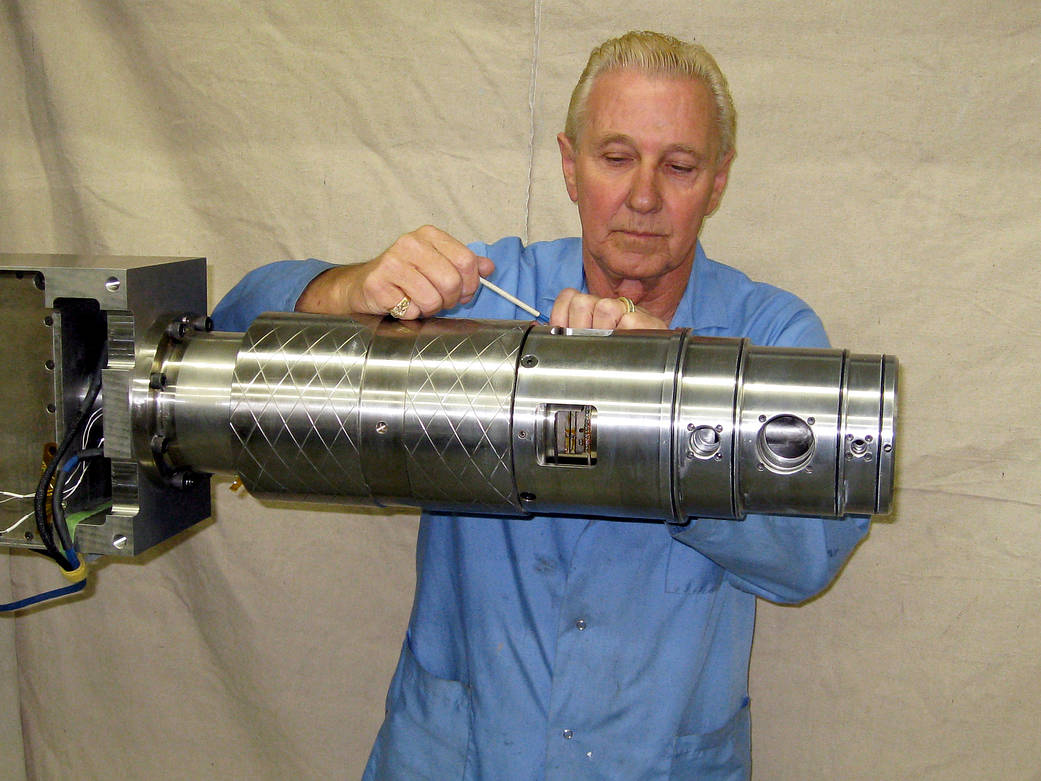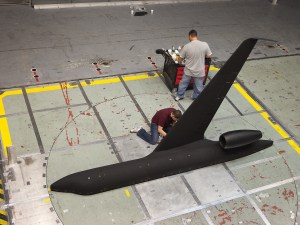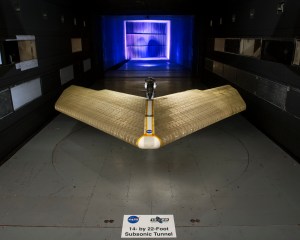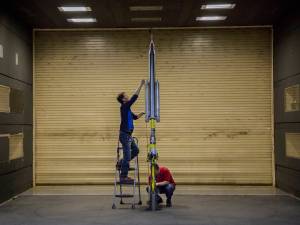Home
Quick Facts
Techniques
Capabilities
Editor’s note: This material is being kept online for historical purposes, but it will no longer be updated.
Test Technology’s force measurement technology has the capability to yield different forms of information from known measurement techniques for measuring strain and force. New usages, modifications and information that come from existing techniques may result in system improvements for both research, design and testing.
Developing Capabilities
AETC Test Technology seeks out ways to apply existing measurement techniques into new capabilities in order to improve a measurement system or to discover new flow characteristics. These new capabilities often simply apply existing instrumentation in new ways or to different situations. They may also be found by simply making modifications to existing techniques. This process of improving and expanding existing techniques allows NASA to increase its exploration abilities, while primarily using resources that are already established and accessible.
BALFIT Balance Calibration Data Analysis Software Tool
This software tool will be used to help analyze the data taken from force-balance calibrations. Development of the tool is being led by the National Force Measurement Technology Capability (NFMTC) Project out of NASA’s Ames Research Center, but will also be used at NASA’s Glenn Research Center, NASA’s Langley Research Center, Arnold Engineering and Development Center (AEDC), and other commercial and contracting vendors.
Balance Safety of Flight Systems for AETC Centers
NASA’s Ames Research Center and the NFMTC are developing a common safety of flight system for force-balance models. These systems are used to monitor and record static/dynamic loadings on the balance during use in order to ensure the balance is used within its design and does not get overloaded to unsafe conditions during use. With the higher risk associated with tunnel downtime due to damage, it is critical that NASA invest in these efforts in order to ensure safe operations at AETC facilities.
Advanced Balance Signal Conditioning Evaluations
Improvements are being made by NASA’s Ames Research Center and the NFMTC to the current force-balance signal conditioning.
Semi-Span Balance Development and Calibration Capabilities
Semi-span models are often developed in order to provide higher-fidelity test articles with higher Reynolds number testing capabilities. Increases in semi-span testing across NASA have led to the development of new semi-span force balances, and new calibration systems and techniques in order to be able to calibrate these balances. New balances/systems are being developed with support from AETC and the NFMTC to support agency-wide testing requirements.
Statistical Engineering
Statistical engineering leverages statistical methods and tools and emphasizes a strategic investment of resources for effectively calibrating force measurement systems. Defendable uncertainties in these measurement systems rely on adequate calibrations over the possible operating environments. For example, response surface methods are used to develop calibration matrices for force measurement systems in order to support pre-determined calibration objectives. There are also other statistical methods and tools being used or researched for applications to calibration of force measurement systems, and these include regression analysis, quality control, and Bayesian analysis.



































